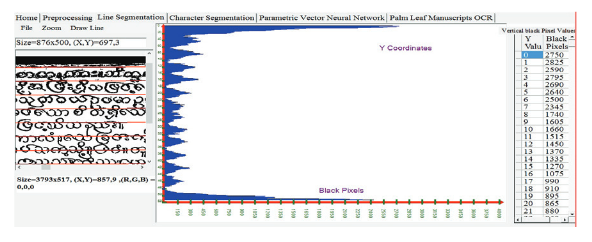Syllabus Line Segmentation from Palm Leaf Manuscripts using Vector Neural Network
Main Article Content
Abstract
This paper offers finding the syllabus segmentations from palm leaf manuscripts. This system can be used to provide for enhancing palm leaf manuscripts are taken by high quality resolution digital camera. The Vector Neural Network is that object location can be determined by clustering points of interest and hierarchically forming candidate of palm leaf manuscript regions according to similarity and spatial proximity predicates. This system can be used to optimize two factors: RGB background colors and number of vertical lines or horizontal lines to choose candidate area. Moreover, Parametric Vector Neural Network performs better accuracy and less calculation time than other traditional methods. This system can be applied to segmentation of candidate area which includes text. The results of the research can be used as an input image to implement an OCR system to provide information of being existence for their related fields. Neural network ensemble techniques have been shown to be very accurate classification techniques. However, in some real-life applications, a number of classifiers required to achieve a reasonable accuracy is enormously large and hence very space consuming. This paper introduces special neural method, Vector Neural Network (VNN), which has great associative memory and high performance. Parametric VNN analyzed using various size of database having randomly created patterns, noise levels, and fixed q-dimensions. The result shows that it has capacity much greater than conventional Neural Networks
Article Details

This work is licensed under a Creative Commons Attribution-NonCommercial-NoDerivatives 4.0 International License.
All authors need to complete copyright transfer to Journal of Applied Informatics and Technology prior to publication. For more details click this link: https://ph01.tci-thaijo.org/index.php/jait/copyrightlicense
References
Alahakoon, C. N. K. (2006). Identification of physical problems of major palm leaf manuscripts collections. Journal of the university librarians association of Sri Lanka, 10, 54-66.
Chacko, B. P., & Babu, A. P. (2011). Online sequential extreme learning machine based handwritten character recognition. In Students’ technology symposium (TechSym), IEEE, p. 142-147.
Forcadel, N., Guyader, C. L., & Gout, C. (2008). Generalized fast marching method: applications to image segmentation. Numerical Algorithms, 48 (1), 189-211.
Heath, M. D., Sarkar, S., Sanocki, T., & Bowyer, K. W. (1997). A robust visual method for assessing the relative performance of edge-detection algorithms. IEEE transactions on pattern analysis and machine intelligence, 19 (12), 1138-1359.
Kryzhanovskii, B. V., & Mikaelyn, A. L. (2003). An associative memory capable of recognizing strongly correlated patterns. Doklady Mathematics, 67 (3), 455-459.
Leavline, E. J., & Sutha, S. (2011, June). Gaussian noise removal in gray scale images using fast multiscale directional filter banks. In International conference on recent trends in information technology (ICRTIT), p. 884-889.
Lee, T.-H. H. (2010). Edge detection analysis. Graduate institute of communication engineering, national Taiwan university.
Miljković, O. (2009). Image pre-processing tool. Kragujevac Journal of Mathematics, 97-107.
Moni, B. S., & Raju, G. (2011). Modified quadratic classifier and directional features for handwritten Malayalam character recognition. International journal of computer applications (1), 30-34.
Pali Text Society. (2018). Retrieved from https://www.palitext.com/subpages/thaton.htm
Soe, N. N., & Htay, W. (2017). Performance analysis of q-valued dimensions parametric vector neural network classifier. In 15th international conference on computer applications (ICCA) (p. 288-292).
Surinta, O., Schomaker, L., & Wiering, M. (2013). A comparison of feature and pixel-based methods for recognizing handwritten Bangla digits. In 12th international conference on document analysis and recognition (ICDAR), p. 165-169.
Widiarti, A. R., Harjoko, A., Marsono, & Hartati, S. (2014). Preprocessing model of manuscripts in Javanese characters. Journal of signal and in formation processing, 5 (4), 112-122.
Zareizadeh, Z., Hasanzadeh, R. P., & Baghersalimi, G. (2013). A recursive color image edge detection method using Green’s function approach. Optik - International Journal for Light and Electron Optics, 124 (21), 4847 - 4854.





